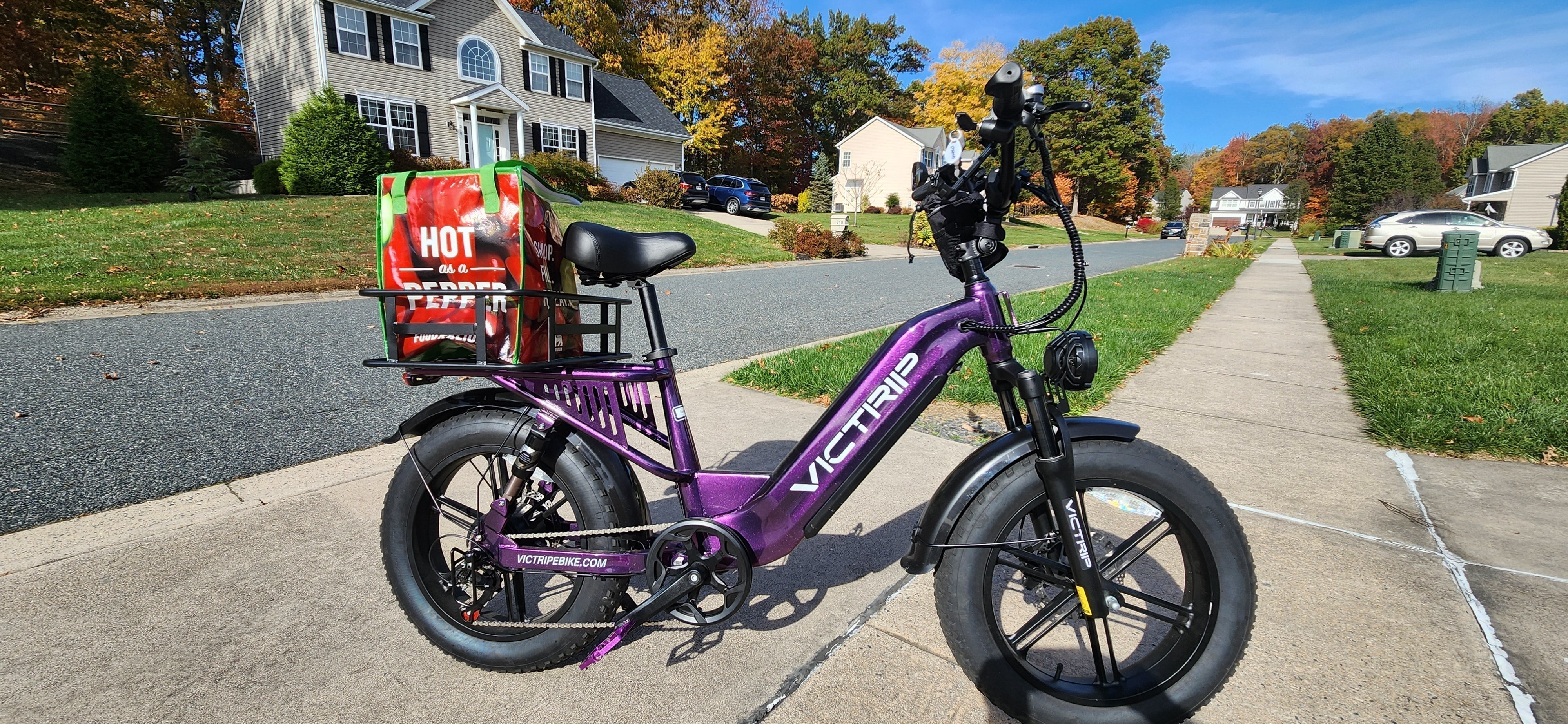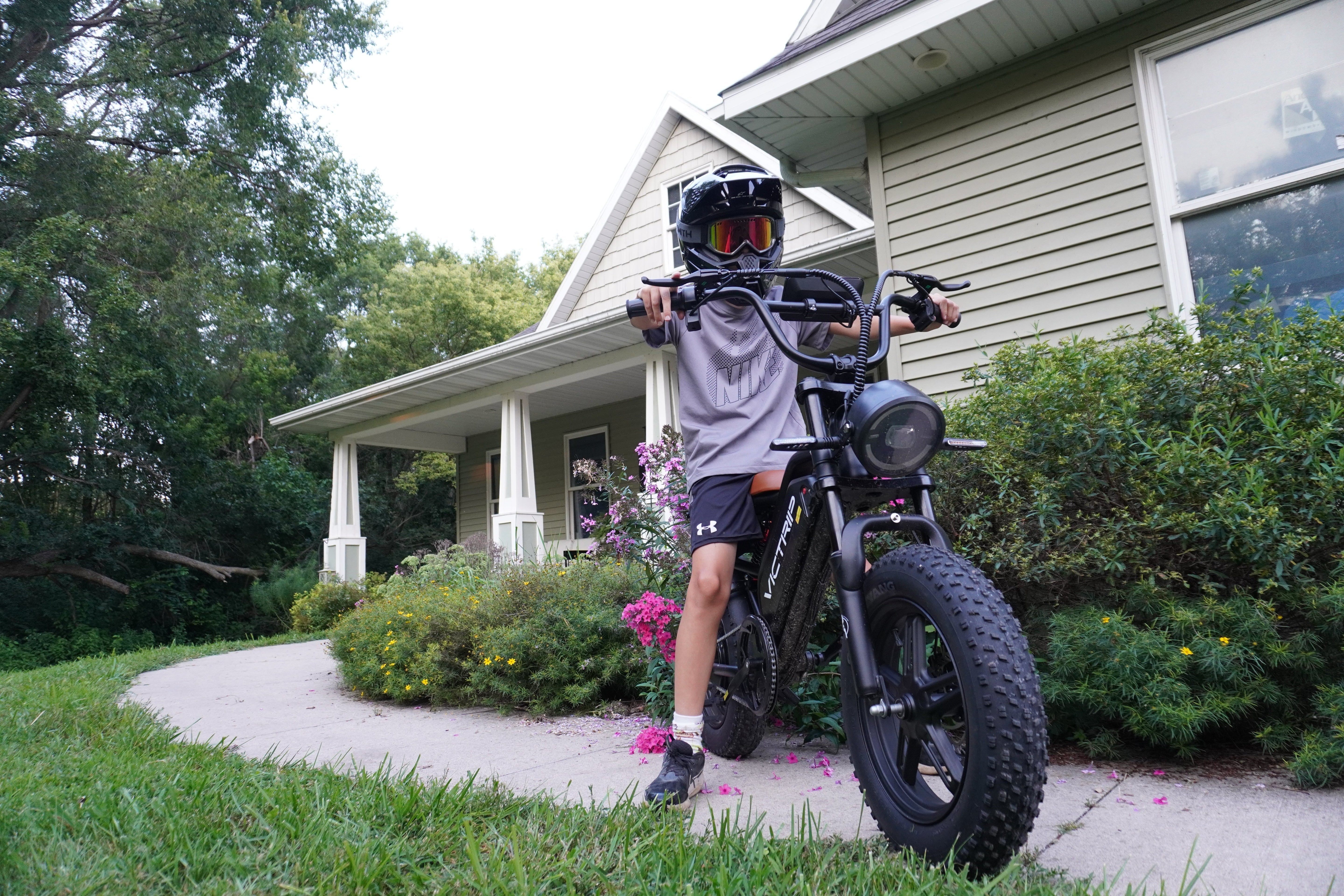
Electric tricycles — “eTrikes” — have quietly evolved from niche mobility aids into practical urban and suburban commuters, cargo haulers, and fun weekend cruisers. They combine the stability of three wheels with electric drive flexibility, making them attractive for people who want more balance than a standard e-bike, or who need cargo capacity without a heavy cargo bike. As battery tech and motor controllers get better, a key question keeps coming up: how fast and how far can eTrikes go in real life? This article walks through the technical factors, legal frameworks, and realistic numbers so you can buy, ride, or spec an eTrike with confidence.
What we mean by “speed” and “range” for eTrikes
Measuring top speed vs assisted speed
When people say “top speed,” they sometimes mean absolute maximum possible speed (what the motor can push in ideal conditions), and sometimes they mean the legally limited assisted speed — the speed at which the motor cuts assistance. In the U.S., for example, many electric two- and three-wheel vehicles are designed to fit into the e-bike classes: Class 1/2 assistance up to 20 mph (32 km/h), and Class 3 up to 28 mph (45 km/h). Some high-power trikes exceed these figures but then may be legally treated like mopeds or require special registration. So check local rules before you chase top speed.
Range: rated vs real-world
Manufacturers often quote range based on ideal conditions (light rider, low assist level, flat roads). Real-world range depends on battery capacity (watt-hours, Wh), average power draw (Watts), rider effort, terrain, payload, wind, and even tire pressure. Expect manufacturer “PAS” (pedal-assist) numbers to be optimistic; real-world throttle-on riding will usually yield notably less range. Tools and calculators can help estimate your expected miles per charge given your typical conditions.
Core factors that determine eTrike speed
Motor power and controller limits
Motor rating (e.g., 250W, 500W, 1000W) gives a baseline for potential speed and hill-climbing ability. But the controller — which limits current — plus gearbox (if any) and wheel diameter shape the actual speed profile. Many eTrikes use hub motors ranging from 250–1000 W nominal (some peak higher), with 500–750 W being a common sweet spot for everyday trikes. Bigger motors can push higher top speeds and accelerate faster, but they draw more battery and may push the vehicle past legal e-bike limits.
Battery capacity and voltage
Higher voltage systems (48V, 60V, etc.) let motors produce more power efficiently; larger capacity (Ah) increases watt-hours (Wh = V × Ah), which directly ties to range. For example, a 48V 20Ah pack = 960 Wh. Some long-range e-bikes and eTrikes offer multi-kilowatt-hour packs nowadays; these yield dramatically longer claimed ranges — but they add weight and cost. Manufacturer claims like “120–180 miles” typically assume steady pedaling or low power modes and may rely on very large Wh packs.
Rider weight and load
Every additional 10–20 kg of payload reduces range and slows acceleration — sometimes dramatically on hills. For cargo-oriented eTrikes, design often balances battery size with payload expectations.
Aerodynamics and rolling resistance
Trikes often have more frontal area and sometimes more rolling resistance than slim e-bikes. Cargo boxes and upright seating increase drag; at higher speeds, aerodynamics matter much more for power draw.
Core factors that determine eTrike range
Battery chemistry & capacity (Wh)
Lithium-ion is standard. Energy density and battery management system (BMS) quality influence usable capacity and long-term degradation. Always compare Wh, not just Ah. Bigger Wh = more miles, all else equal.
Pedal-assist level and throttle use
More pedaling + lower assist = massive range gains. Throttle-only use is the biggest range killer — you’re drawing all energy from the battery rather than sharing work with your legs.
Terrain, wind, and temperature effects
Hilly routes, headwinds, and cold temperatures reduce usable range. Expect significant losses on steep hilly rides and in cold weather (~10–30% depending on severity).
Typical numbers in 2024–2025 (what to expect)
Below are practical numbers you’re likely to see across the market in 2024–2025. These are ranges and averages based on industry tests and manufacturer specs; individual results will vary.
Common motor and battery pairings
-
Light commuter eTrikes: 250–500 W motor; 300–700 Wh battery — typical assisted range 20–50 miles per charge under mixed pedaling.
-
Mid-tier utility eTrikes: 500–750 W motor; 700–1,200 Wh battery — practical range 40–80 miles with mixed pedaling and moderate loads.
-
Long-range / high-power eTrikes: 1,000 W+ motors; 1,500–3,000 Wh packs — some manufacturers quote 100+ mile range in PAS mode; real-world throttle ranges typically less but still impressive for long-haul commuting.
Average urban commuter numbers
For everyday city use with regular pedaling, many users report 20–60 miles per charge depending on battery size and assist. Urban stop-and-go often uses less continuous power than sustained high-speed riding, which helps range.
Long-range and performance exceptions
Some long-range models (especially those with very large Wh batteries and efficient motors) can claim >100 miles in low-assist PAS modes. Example spec sheets for high-capacity builds show extremely large figures — but they assume conservative assist settings and a rider contributing pedaling power. Always scrutinize the test conditions.
Legal & safety considerations for top speed
U.S. classes & state variations
In the U.S., e-bike classification commonly follows three classes: Class 1 and 2 up to 20 mph; Class 3 up to 28 mph (pedal assist). States and local jurisdictions may add helmet or age rules, or restrict where faster classes can be used. If your eTrike pushes beyond these assistance limits (e.g., 30+ mph), it may be treated like a moped or motorcycle in some places. Always verify local rules before modifying for higher speed.
Read More: Are Electric Trikes Street Legal in the US?
Helmet, brakes, and handling needs
Higher speeds require better brakes (hydraulic discs, larger rotors), improved suspension, wider tires, and stability-focused geometry. An eTrike with a powerful motor should have correspondingly strong stopping systems and structural design.

Practical tips to squeeze more range & speed safely
Riding technique and gearing
-
Pedal whenever possible — even gentle pedaling in PAS mode dramatically extends range.
-
Use the right gear to keep your cadence efficient; high cadence + assistance is more efficient than lugging a low cadence.
-
Plan routes with fewer big climbs when range is critical.
Maintenance and battery care
-
Keep tires at recommended pressures.
-
Maintain drivetrain and brakes to reduce energy loss.
-
Charge correctly and avoid full-discharge cycles where possible to extend battery life.
Upgrades that make sense
-
Upgrading to wider, low-rolling-resistance tires tailored for load can improve range and comfort.
-
Firmware updates or better motor controllers can improve efficiency; but be careful — “unlocking” more top speed may create legal problems and strain components.
Real-world examples & model highlights
Practical commuter eTrikes
Tests and roundups from 2024–2025 list several stable commuter eTrikes that balance range and cost; these typically feature 500–750 W motors and 700–1,200 Wh batteries and deliver reliable 30–60 mile days for most riders. Independent reviews emphasize stability and practicality for riders who need cargo/seat options. A good example is the VICTRIP T1 Foldable Electric Tricycle, which combines a compact folding frame with solid battery capacity, making it ideal for urban commutes where storage space is limited.
TOP PICK

VICTRIP® T1 Foldable Electric Tricycle
Long-range / high-power examples
Some manufacturers offer e-trike or e-bike systems with very large packs (2,000–3,000 Wh) and 1,000 W motors, advertising ranges well over 100 miles in PAS mode. Example spec pages for high-capacity products show ranges of 120–180 miles under very specific conditions (light rider, PAS, measured steady speeds), while real-world throttle use typically yields lower figures. If you need true long-distance capability with heavy loads, these high-Wh systems are the practical option, but expect more weight and higher price.
Environmental & economic payoff
Compared with a car, an eTrike consumes far less energy per mile and produces lower lifecycle emissions, even accounting for battery production. For short-to-medium commutes, switching to an eTrike lowers operating cost (electricity + upkeep vs gasoline, insurance, parking) and reduces carbon impact, especially when charged from low-carbon electricity. In many cities, eTrikes replace car trips for errands and commuting, making them an efficient urban mobility option.
The near future: tech trends to watch
Battery improvements & fast charging
Battery energy density continues to improve slowly but steadily. Expect better BMS, faster charging protocols, and more modular packs that let riders add capacity when needed.
Motors, controllers, and software tuning
Smarter motor controllers and regenerative braking tuned for trikes (with their unique dynamics) will boost real-world efficiency. Expect more integration (apps that optimize power delivery for range) and remote firmware updates that eke out efficiency gains.
Conclusion & final recommendations
eTrikes are practical, stable, and increasingly capable. If you want a commuter trike, aim for a balanced motor (500–750 W) and a 700–1,200 Wh battery for reliable daily range (30–60 miles typical). If your priority is long-distance hauling or touring, consider higher-Wh systems and be prepared for extra weight and cost. Always check local regulations before buying or modifying for higher speed and prioritize brakes, handling, and structural integrity if you plan to ride fast.
FAQs
What’s a realistic top speed for most eTrikes out of the box?
Most consumer eTrikes intended for commuting are set up to assist to 20–28 mph depending on class and model. Higher top speeds exist on performance models but may change the legal classification of the vehicle where you live.
How far will an eTrike go on one charge?
Typical commuter eTrikes with medium batteries (700–1,200 Wh) often manage 30–80 miles in mixed-assist riding. High-capacity packs (1,500–3,000 Wh) can be rated for 100+ miles under conservative PAS testing, but expect less in throttle-heavy or hilly use.
Does bigger motor always mean shorter range?
Not necessarily. Bigger motors draw more power when pushed hard, but they can operate more efficiently at moderate loads. The real determinant is how you ride — aggressive throttle use with a big motor reduces range fastest.
Can I upgrade my eTrike’s battery for more range?
Often yes — if the frame and controller support it. Upgrading to a higher-Wh pack usually increases range but also weight and cost. Make sure any upgrade is compatible with the BMS and charger.
Are eTrikes legal everywhere?
Regulations vary by country, state, and even municipality. Many regions apply e-bike-style rules to eTrikes, but high-power or high-speed models can be regulated as mopeds or motorcycles. Always check local rules.




Share:
Electric Tricycles for Seniors: Why They’re a Perfect Choice?
Adult Tricycles vs. E-bikes: What’s the Difference?